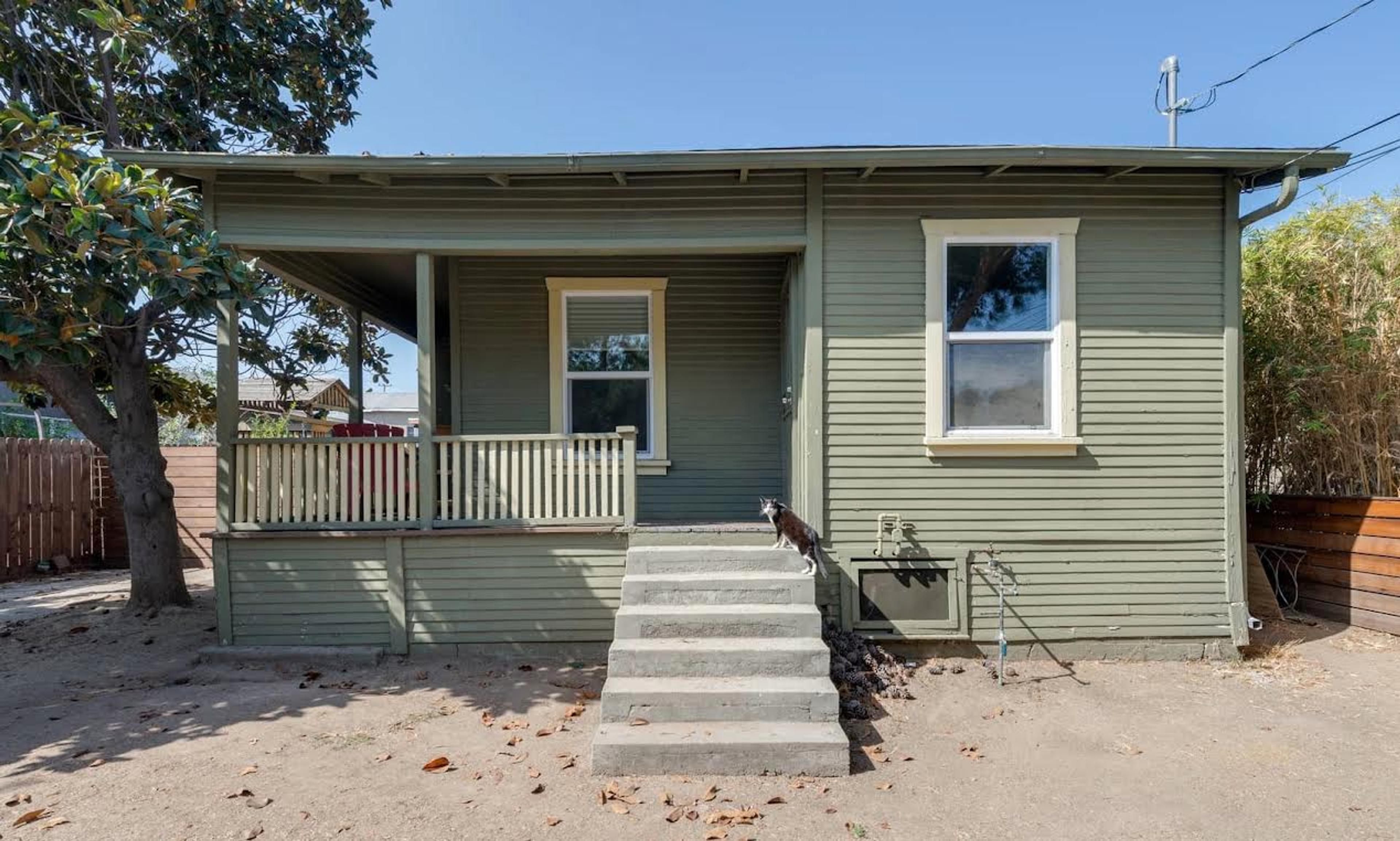Now, this one I take personally.
My boy went to Thomas Starr King Middle School. Thus there was no lack of time spent on Bates Avenue, picking him up, parking for a school play, etc.
I always admired this little house. So calm and wooded, it was like the Shire.
I suspect I'm not the only one who would enjoy this sylvan property, with its arboreal setting and multiple structures. I could live with my family in the front house, and then go putter in the shed; my wife could run her business from the back house, while my boy turned the other shed into his man-cave. We'd barbeque and put on plays in the yard and then I'd rake up the pine needles while wearing a cardigan. I know that the average idea of heaven is, I dunno, having a million followers watch you snorting ket with Luh Tylyer, but I'm gonna go rake pine needles. Call me old fashioned. It wouldn't be the first time.
Anyway, if you're on this site, then you know where this is going. I'll let the pictures speak for themselves.
One day, this happened—
Beside clear-cutting the bosky property, I'm especially amused that they destroyed one of these amazing street trees, because it was too close to their precious precious driveway, which somehow wasn't a problem with the old driveway
Ah yes, much improved. I'm certainly glad, knowing Scott Wiener sleeps better, our having been saved from the evils of the home and hearth.
Most of the images on this post I stole from here
About Nathan Marsak
NATHAN MARSAK says: “I came to praise Los Angeles, not to bury her. And yet developers, City Hall and social reformers work in concert to effect wholesale demolition, removing the human scale of my town, tossing its charm into a landfill. The least I can do is memorialize in real time those places worth noting, as they slide inexorably into memory. In college I studied under Banham. I learned to love Los Angeles via Reyner’s teachings (and came to abjure Mike Davis and his lurid, fanciful, laughably-researched assertions). In grad school I focused on visionary urbanism and technological utopianism—so while some may find the premise of preserving communities so much ill-considered reactionary twaddle, at least I have a background in the other side. Anyway, I moved to Los Angeles, and began to document. I drove about shooting neon signs. I put endless miles across the Plains of Id on the old Packard as part of the 1947project; when Kim Cooper blogged about some bad lunch meat in Compton, I drove down to there to check on the scene of the crime (never via freeway—you can’t really learn Los Angeles unless you study her from the surface streets). But in short order one landmark after another disappeared. Few demolitions are as contentious or high profile as the Ambassador or Parker Center; rather, it is all the little houses and commercial buildings the social engineers are desperate to destroy in the name of the Greater Good. The fabric of our city is woven together by communities and neighborhoods who no longer have a say in their zoning or planning so it’s important to shine a light on these vanishing treasures, now, before the remarkable character of our city is wiped away like a stain from a countertop. (But Nathan, you say, it’s just this one house—no, it isn’t. Principiis obsta, finem respice.) And who knows, one might even be saved. Excelsior!””
Nathan’s blogs are: Bunker Hill Los Angeles, RIP Los Angeles & On Bunker Hill.
